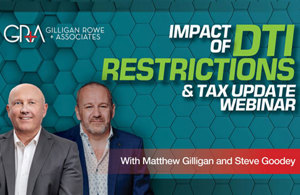
The voidable preference regime is a complex area and is undoubtedly one of the most controversial aspects of the statutory powers provided to liquidators.
It must be remembered that insolvency law, particularly in relation to voidable charges or transactions, is constantly evolving as creditors and liquidators go head to head to maximise returns for their respective interests - and generally from insufficient assets of the company in liquidation.
Although recent decisions have favoured liquidators, parties caught up in voidable preference applications need to consider all of their options. Often creditors can nullify liquidators' claims by being informed of their rights, taking advice early, and may even obtain substantial discounts when they have little or no defence available to them.
Voidable preference becomes an issue when a company goes into liquidation, and is something creditors need to be aware of. Covered by the Companies Act, its purpose is to ensure equal treatment of creditors in a liquidation situation.
The Insolvency Act, on the other hand, deals with personal insolvency (bankruptcy). However, the Official Assignee has similar powers to a liquidator with regard to creditors.
What is a voidable preference?
A voidable preference is a payment the company in liquidation has previously made that favours one creditor over the others. In other words, that creditor has been given preference and has received more than they would have through the liquidation process.
To qualify as a voidable preference, the payment must have been made:
- within the two years prior to liquidation
- while the company was in a state of insolvency (i.e. unable to pay its current debts).
The full definition of an insolvent transaction can be found in Section 292 of the Companies Act.
What does this mean for creditors?
If the liquidators deem a payment to be a preferential transaction, the creditor is required to pay it back, or defend their entitlement to keep the payment.
One of the main disadvantages to creditors caught up in voidable preference issues is cost. In many cases, we've found that even if a creditor could have established a reasonable defence, they will elect to repay it rather than risk losing the case and incurring legal expenses and liquidators' costs.
Liquidators are pursuing voidable preferences
Voidable preference claims have become increasingly popular with liquidators as a means to ensure a financial recovery in liquidations. It could be argued that the voidable preference regime was not designed to benefit the general body of creditors but rather to provide liquidators with funds to pay their own fees, which may explain why they pursue them so vehemently.
Defences available to creditors
Some transactions can be set aside and won't be considered voidable preferences, as defined in Section 296 (3) of the Companies Act.
A creditor must show that all three points in this section have been met in order for the transaction to be exempt. In other words the creditor must have:
- Had no grounds for suspecting the company was having financial difficulties (e.g. dishonoured cheques, not paying on time, or the creditor having to use a debt collection agency)
- Honestly believed the transaction would not involve any element of undue preference
- Given value
It is the third point that has recently received increased attention from the courts. In a case before the High Court (Farrell v Fences & Kerbs [2012]), it was ruled that this point was fulfilled if value was given prior to payment, which would be the case in most transactions. However, this decision was later overruled by the Court of Appeal, which stated that new value had to be given after or at the time of payment.
The running account
In 2006, an amendment to the Act brought about a significant change to the existing voidable preference regime with the introduction of the “continuing business relationship” or “running account” principle.
Under the running account principle, liquidators are required to treat a series of transactions as a single transaction because they are part of a continuing business relationship. Because the net indebtedness fluctuates over time, liquidators must consider the overall effect for the period in question.
This can be of benefit to creditors, as illustrated in the example below. Prior to this law change, a liquidator could pick and choose which transactions to target as voidable.
The liquidator is, however, entitled to decide when the running account begins and ends, and will obviously choose the period during which the creditor had peak indebtedness. At a minimum, the running account period will cover the six months prior to liquidation. This is known as the "restricted period" during which it is presumed the company was insolvent and could not pay its due debts.
It has generally been taken for granted that we would follow Australian authority in this regard, and at this point in time I believe it is the correct position. However, I am also aware that there are cases before the court that are reconsidering the running account argument, and therefore it may change.
Running account example
Company A is placed into liquidation on 2 September 2012. The six-month restricted period therefore begins in April.
On 1 April 2012 Company A owed Creditor B the sum of $50,000. In April, B told A that he wouldn’t supply them with goods unless they agreed to pay $10,000 per month on the arrears and keep up to date on all future goods supplied. A agreed.
The table illustrates how prior to the 2006 change, B could face claims of $110,000. However, as a result of the running account, B could only ever be exposed to a claim for $30,000 (opening balance of $50,000 less closing balance of $20,000).
| Date | Supplied Goods | Supplier Received Payment | Running Account |
| 01/04/12 | Opening balance | 50,000 | |
| 02/04/1 | 10,000 | 60,000 | |
| 20/04/12 | 20,000 | 40,000 | |
| 01/05/12 | 30,000 | 70,000 | |
| 20/05/12 | 40,000 | 30,000 | |
| 01/06/12 | 10,000 | 40,000 | |
| 20/06/12 | 20,000 | 20,000 | |
| 01/07/12 | 20,000 | 40,000 | |
| 20/08/12 | 30,000 | 10,000 | |
| 01/09/12 | 10,000 | 20,000 | |
| Total | 70,000 | 110,000 |
Advice for creditors
Creditors should always look to minimise their exposure to voidable preference claims. Ways to do this are:
- Be aware of their rights
- Have internal credit risk policies that minimise the threat of being exposed to future preferential transaction claims
- Get professional advice
Summary
If you have cash flow, creditor or insolvency issues, please feel free to contact us. If you know anyone who is in financial difficulty we are happy to meet them to discuss the issues free of charge. We are specialists in this field who will offer sound professional advice and guidance. You can contact us in strictest confidence on +64 9 522 7955, [email protected] or via our online form.

Salesh Chand
Partner and Director of Business Services
Did you like this article? Subscribe to our newsletter to receive tips, updates and useful information to help you protect your assets and grow your net worth. We're expert accountants providing expert advice to clients in NZ and around the world.
Disclaimer: This article is intended to provide only a summary of the issues associated with the topics covered. It does not purport to be comprehensive nor to provide specific advice. No person should act in reliance on any statement contained within this article without first obtaining specific professional advice. If you require any further information or advice on any matter covered within this article, please contact the author.
Comments
Testimonials
All the speakers are very professional for their topic. They are all very knowledgeable. - Anon - December 2017
Property 101by Matthew Gilligan
Investing in residential property?
Put this at the top of your reading list.
If you're investing in residential property, seeking to maximise your ability to succeed and minimise risk, then this is a 'must read'.
Matthew Gilligan provides a fresh look at residential property investment from an experienced investor’s viewpoint. Written in easy to understand language and including many case studies, Matthew explains the ins and outs of successful property investment.
- How to find the right property
- How to negotiate successfully
- Renovation do's & don'ts
- Property management
- Case studies and examples
- and much, much more...









































